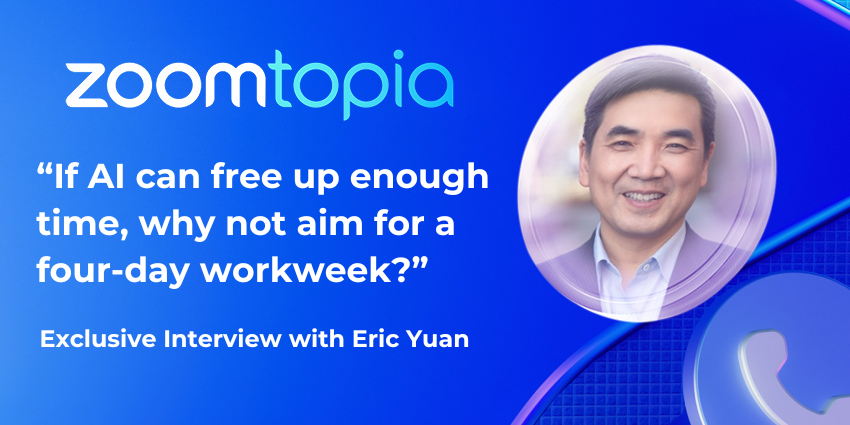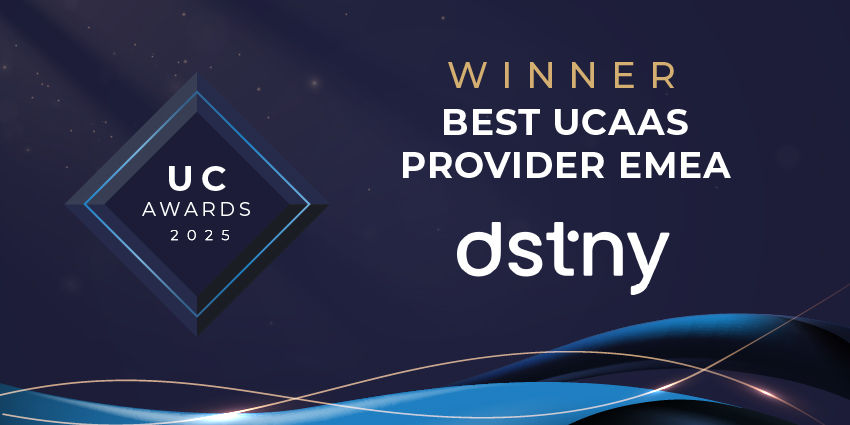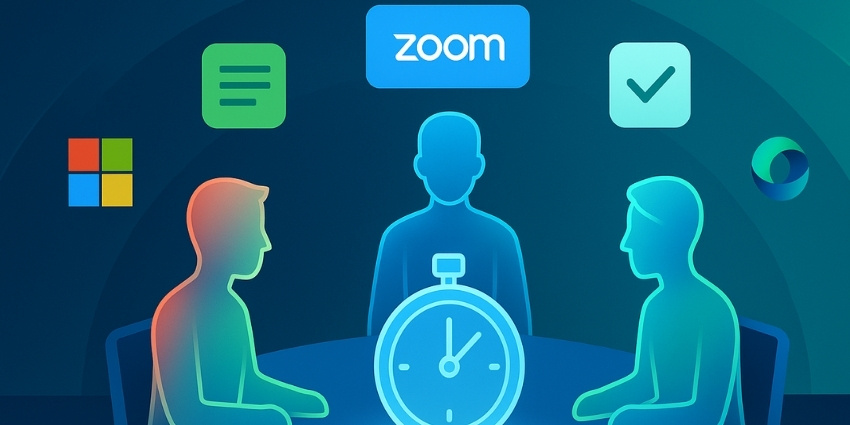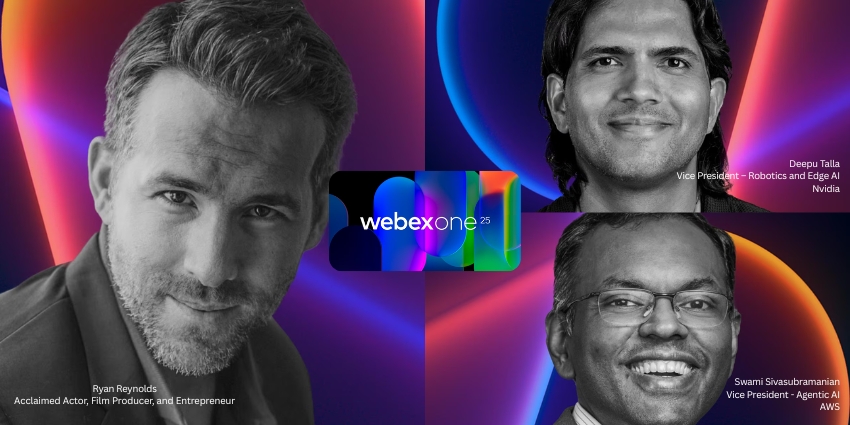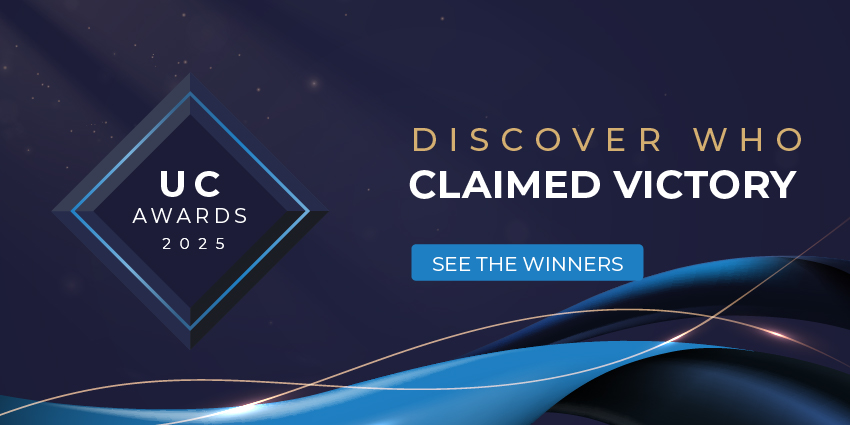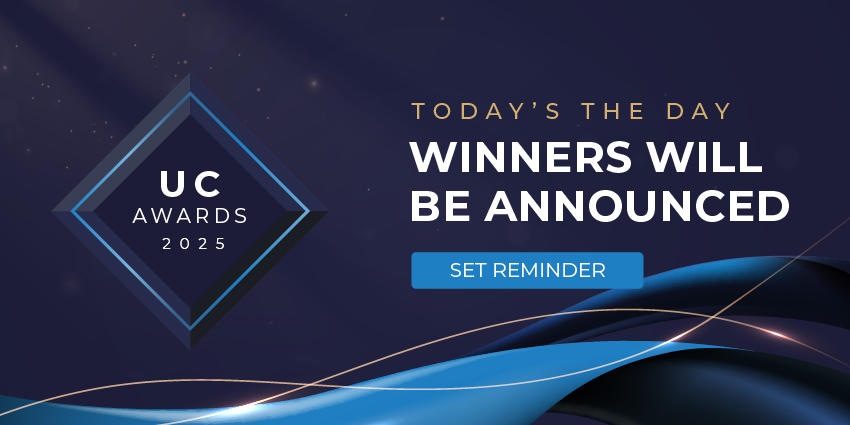At Zoomtopia 2024, I was fortunate enough to sit down for an exclusive interview with Eric Yuan, CEO and Founder of Zoom, shortly after delivering an inspiring keynote that outlined Zoom’s bold vision for the future of work, driven by the continued integration of AI and a strong commitment to user empowerment.
Eric emphasized Zoom’s evolution from a meeting platform to an AI-first work platform, designed to help users connect better, work more efficiently, and ultimately “work happy.”
Central to this vision is the Zoom AI Companion, which Eric positioned as a revolutionary tool that can simplify complex tasks, such as generating meeting summaries, managing communications, and assisting with task management. He even suggested the possibility of AI freeing up enough time to enable a four-day workweek in the future, drawing parallels to Henry Ford’s introduction of the 40-hour workweek.
Eric painted a future where AI becomes an indispensable assistant, capable of handling routine tasks like managing emails, summarizing meetings, and even assisting in contract negotiations, while humans focus on the creative and strategic aspects of their work.
Zoom’s AI Companion, available at no additional cost to over 4 million users, including 57% of Fortune 500 companies, is already transforming the way people work by providing smarter, more seamless integrations across the platform.
“Just like Henry Ford revolutionized the workweek in 1926, AI has the potential to redefine work-life balance for the modern era. It’s time to rethink what productivity looks like,” Eric said.
Can AI Fuel a Four-Day Work Week?
The four-day workweek has seen a surge in popularity, largely driven by advancements in AI and automation, enabling organizations to increase productivity while maintaining or improving operational efficiencies. Several high-profile trials in countries like the UK, Iceland, and Japan have shown that this shorter workweek doesn’t lead to a loss in productivity.
AI is a key enabler of this shift, which is transforming how companies approach workflows.
Automation technologies, such as AI-driven customer service bots, predictive analytics, and automated task management, allow businesses to streamline repetitive tasks and make more informed decisions faster. This, in turn, supports the feasibility of a four-day week. According to a 2024 study, 93% of senior leadership in companies where AI plays a central role are either considering or have already implemented a four-day workweek, compared to just 41% of companies that don’t use AI extensively.
Zoomtopia 2024: Redefining Productivity with AI Companion 2.0
In the keynote at Zoomtopia, Eric unveiled the highly anticipated AI Companion 2.0, an evolution of Zoom’s alternative to Microsoft Copilot, which is baked into the plumbing of Zoom Workplace and designed to transform the way users, teams, and customers interact and engage with each other.
It promises to go beyond the basics of automating tasks, instead serving as a comprehensive AI-powered personal assistant that empowers users to focus on more strategic, meaningful work. Seeing is believing, and throughout the day at Zoomtopia, Zoomies were demonstrating live AI Companion 2.0 in action.
We’re just beginning to scratch the surface of what AI can do for productivity. The real value lies in making technology disappear into the background, letting humans do what they do best—be creative and solve complex problems,” Eric said.
What’s New in Zoom AI Companion 2.0?
1. Enhanced Meeting Summaries and Real-Time Insights One of the standout features of AI Companion 2.0 is its ability to generate real-time meeting summaries that capture key discussion points as the meeting unfolds (yes, not just at the end of the meeting). This functionality eliminates the need for manual note-taking, allowing participants to fully engage in conversations without worrying about missing details. AI Companion can also highlight sentiment and points of disagreement or unresolved issues, enhancing real-time insights and speeding up decision-making.
2. Seamless Integration Across Platforms AI Companion 2.0 integrates with third-party apps such as Microsoft Outlook, Google Calendar, and even external services like ServiceNow and Jira. This allows users to synthesize information from multiple sources, enabling a more holistic view of their projects. For example, users can have AI Companion pull data from their emails, meetings, and docs to provide a comprehensive snapshot of their ongoing tasks and responsibilities.
3. Actionable Next Steps Taking it a step further, AI Companion 2.0 summarises meetings and suggests actionable next steps, which can be tracked directly in the new Zoom Tasks tool. Whether scheduling follow-up meetings, drafting documents, or creating task lists, the AI turns static information into dynamic, actionable items that help users close the project loop.
4. Customization with AI Studio A newly introduced feature, the AI Studio, allows businesses to customize AI Companion 2.0 to fit their specific workflows and vocabulary. Organizations can fine-tune the AI to recognize unique industry terms, access custom data sources, and manage tasks across multiple apps, making it a truly personalized productivity tool.
5. Cross-Platform Consistency With AI Companion 2.0, whether you’re in a Zoom Meeting, using Zoom Contact Center, or working in Zoom Docs, your AI assistant remains accessible at all times. It offers real-time suggestions, helps manage tasks, and provides contextual insights no matter where you are in your workflow.
A Vision for the Future
Eric highlighted that AI Companion 2.0 is a key step toward realizing Zoom’s broader vision of an AI-first work platform. With these innovations, Zoom aims to reduce the noise of modern hybrid work environments, making it easier for people to focus on the work that matters most. Eric emphasized that the future of work is not just about collaboration but optimizing how we manage time and attention—and AI Companion 2.0 is at the forefront of that mission.
“The future of work is not about more tools—it’s about the right tools working together to create a unified, empowering experience for every worker,” Eric said.
As AI Companion 2.0 becomes widely available (and is still free for paid users), it promises to revolutionize productivity by turning AI into an indispensable collaborator, helping employees everywhere work happier and more efficiently.
